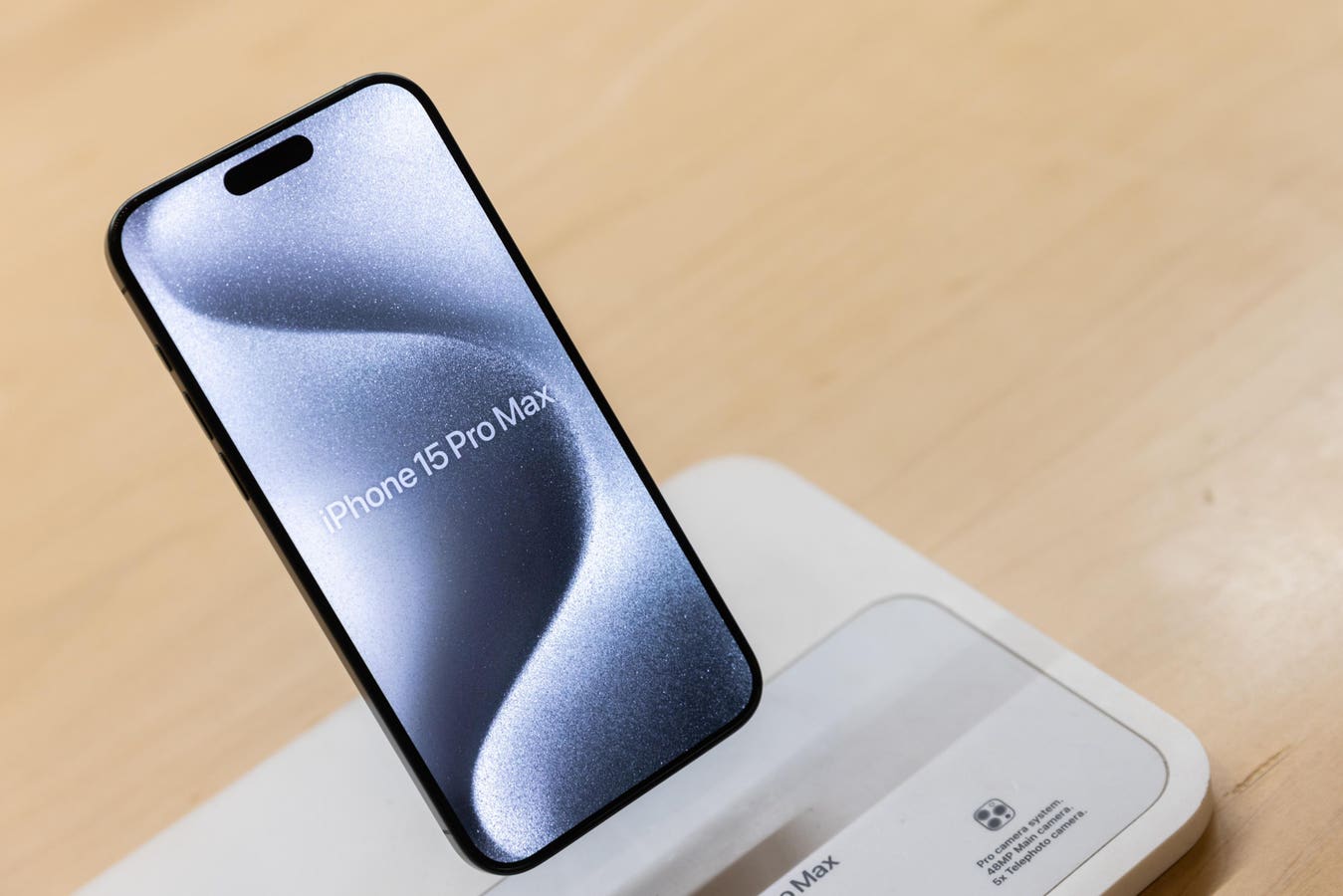An Apple iPhone 15 Pro Max smartphone at the company’s Grand Central store in New York, US, on … [+]
The iPhone 16 is shaping up to be one of the most consumer-friendly devices Apple has released in years.
That’s largely thanks to a series of pro-repairability moves the company has made, or is rumored to be making, in recent months. This week The information reported that Apple was developing a new battery release technology that would make removing it easier.
As it stands, removing batteries from an iPhone requires some skill in peeling off the adhesive strips that glue the battery to the chassis. It’s not an easy task for a casual user with no experience. But Apple wants to change that by using connection technology that releases the battery after “a small electrical pulse.”
The information Sources claim that this new technology could hit at least one iPhone 16 model this year, and would roll out to the entire iPhone 17 lineup by 2025.
The move appears to be an attempt by the Cupertino company to comply with ecodesign legislation passed by the European Union last year. The law specifically states that replacing batteries in a smartphone “shall be achievable without tools, a tool or set of tools provided with the product or spare part, or basic tools.”
Several other announcements, or quiet changes, show that Apple’s new iPhones will be very different from the Apple handsets of the past decade.
For example, the iPhone 15’s redesigned internal chassis makes it easier to remove the rear panel without breaking the glass. Last year, the company introduced a self-service repair program that made it easier for people to fix their devices at home, which has now partially expanded to Europe.
Then there’s the company’s new policy on part pairing, which means iPhone users can swap out parts without Apple’s permission. The change applies to the iPhone 16 and is likely a response to Oregon’s Right To Repair law, which prohibits disabling features if an unauthorized repair is performed on a smartphone.
Elsewhere, a recent patent for a future iPhone described a modular phone with an easily removable back panel. The idea is that the back cover can be swapped out for panels with one or more additional hardware features. So if a user wanted more battery life, they could attach the battery module, or if they wanted a different screen, they could attach a second display.
Nothing about that patent application screams Apple to me; it sounds more like the LG G5, the ultra-customizable Inspector Gadget smartphone from 2016. But the patent application also reads like the EU’s draft smartphone law, which talks about reusable fasteners (the clips, screws and bolts that hold components together) and spare parts that have the effect of “enhancing or restoring the functionality of the device in which they are installed.”
There are some comments to be made about all this. Patents often do not become reality. The independent repair program (separate from the self-service repair program) has been criticized for squeezing the profits of repair shops that signed up. The new part-linking policy apparently only applies to iPhones (read this story on iPads not drawing straight lines after a repair) and Apple has fought hard against some of the new rules, arguing that the law of Oregon “would undermine the security” of iPhone users.
The good news is that Apple’s recent moves indicate that the next iPhone will be one of the most repairable in the company’s history. That means savings for buyers over the life of the device, because iPhones don’t require expensive repairs that only Apple can handle. Devices also do not have to be thrown away if something goes wrong.
Replaceable batteries have also been one of the biggest battles consumers have lost in the past decade, in part because Android manufacturers like Samsung and LG have fought to grab some of Apple’s market share by adopting the iPhone’s sleek design. We may be back on the path to being able to easily replace batteries when needed, rather than paying Apple $99 to do so.
